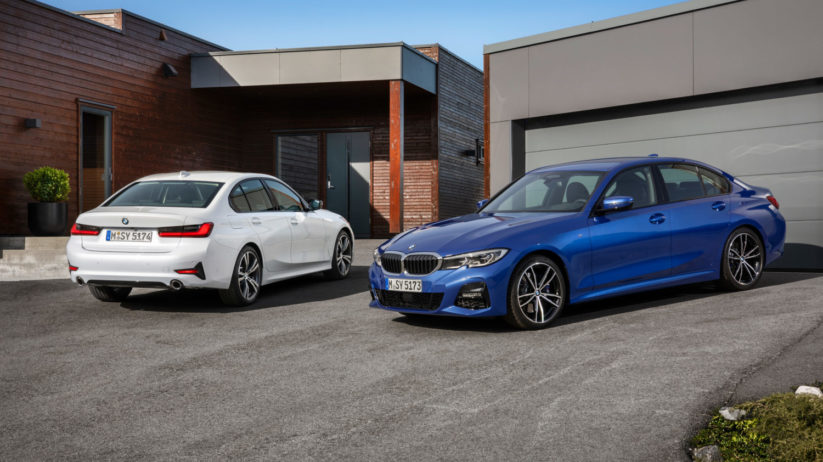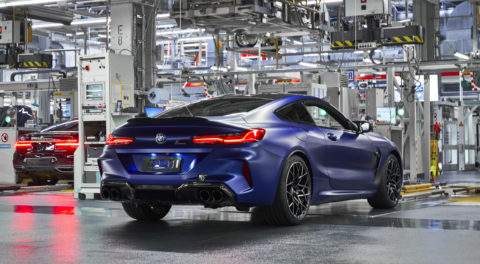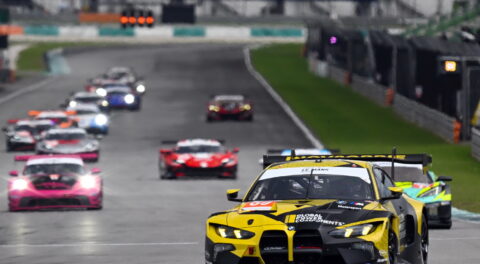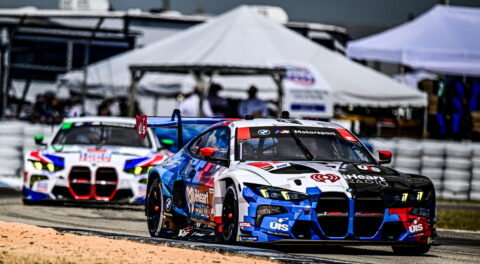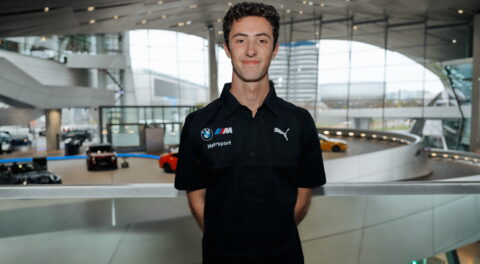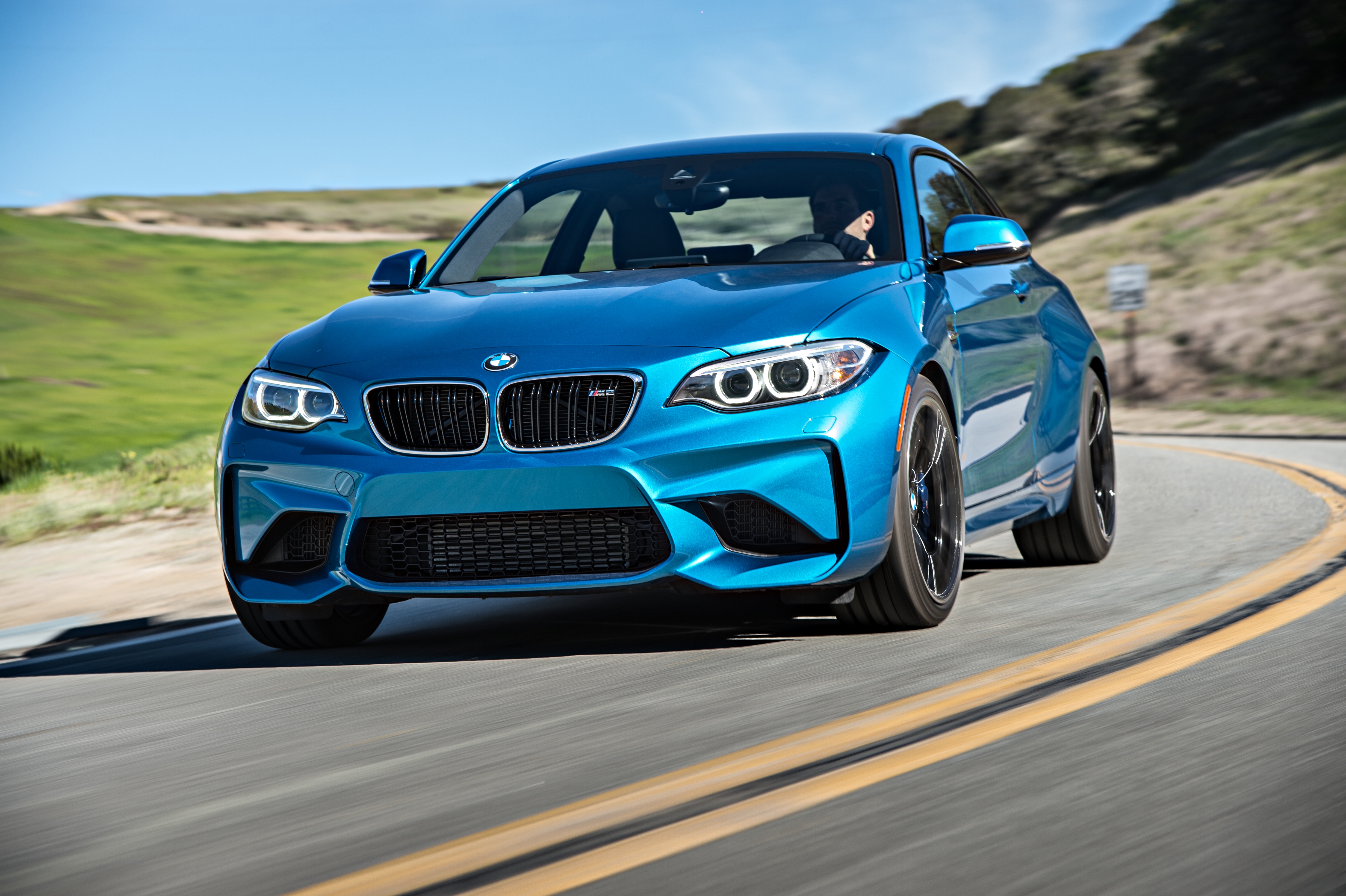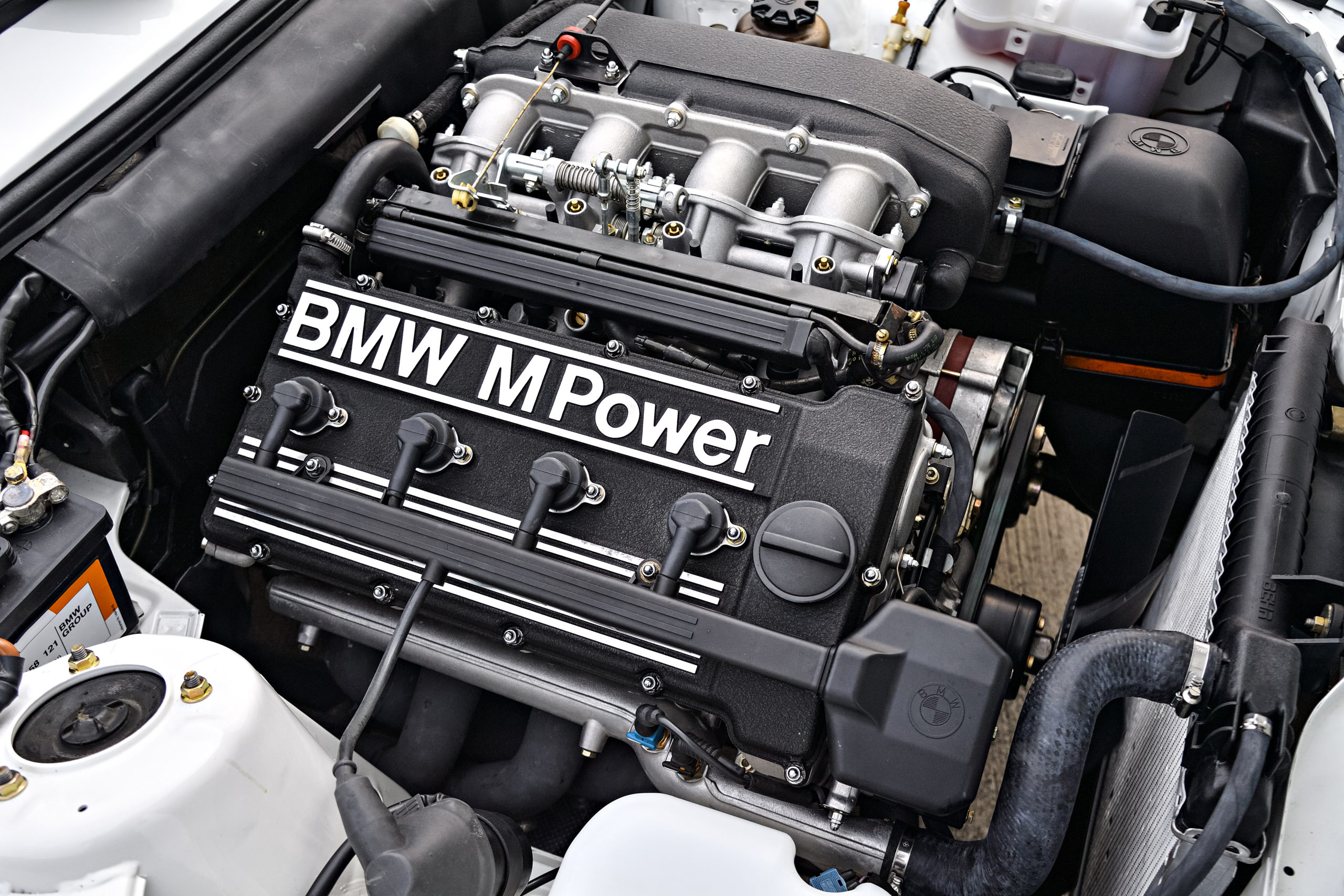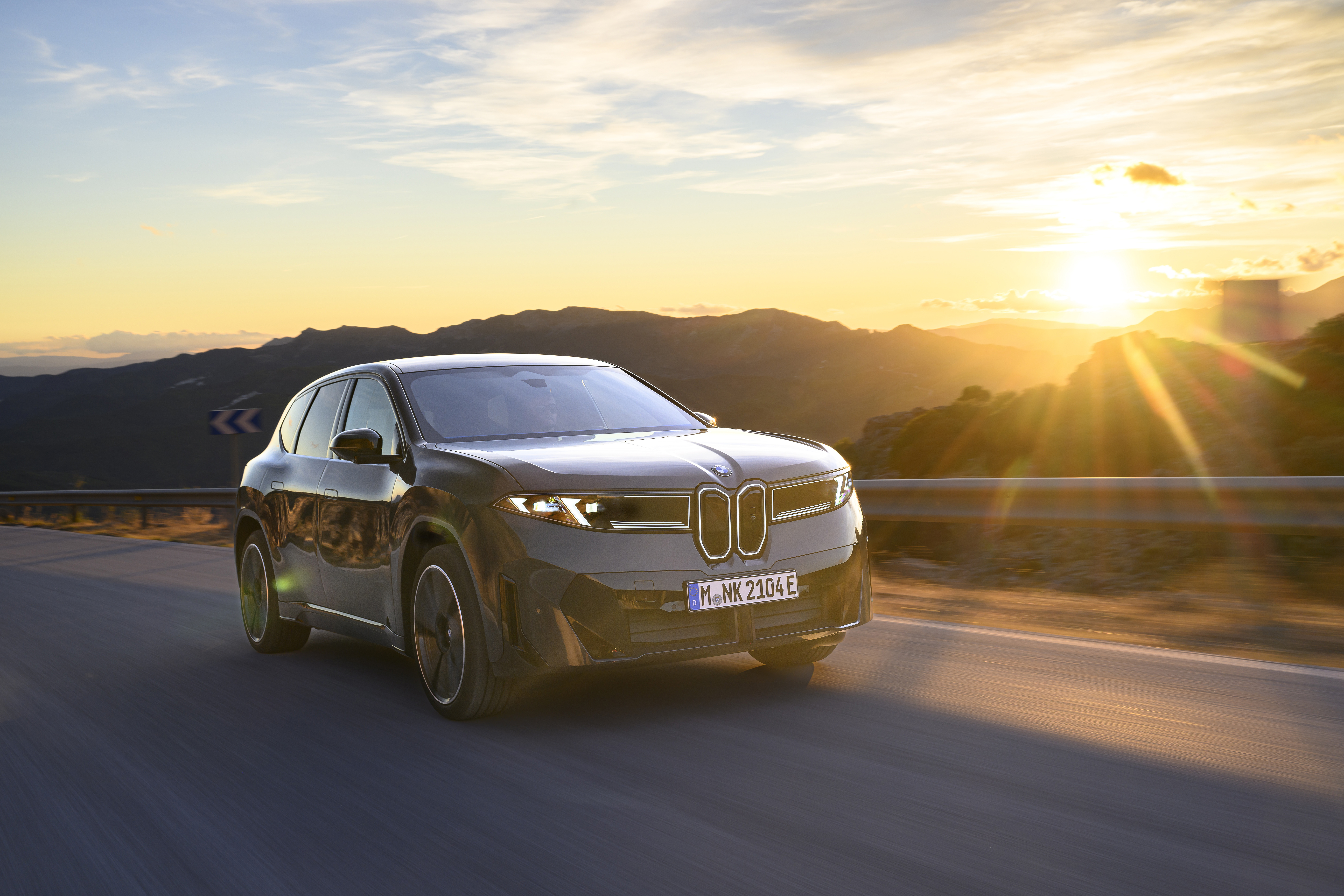To understand the importance of the 3 Series and how it relates to BMW as an automaker requires at least a cursory knowledge of the history surrounding the brand. Initially brought to market in July of 1975, the E21 did much more to usher in BMW’s current nomenclature than the E12 5 Series which predates it in terms of availability by three model years. Riding on the coattails of the highly successful 2002 which has since been anointed to the level of modern icon, it was BMW, not Fiat, Alfa Romeo, Renault, Ford or Triumph who invented the sport sedan segment, with initial design lineage roots tracing back to 1950’s serial production.
It would take trials in the form of a few different platforms over the years to really get things right, but the BMW 700 proved to offer enough in the way of practical and sporting transportation in an affordable package to effectively save BMW from the brink of bankruptcy, and an internally proposed merger with Daimler-Benz. Before 700 production would come to an end in the mid 1960’s, the New Class sedan would be brought to market. Offering increased capacity in terms of passenger and cargo room, the New Class also came with the then-new M10 engine, which would be produced for nearly 30 years. A sporting sub-model, initially conceived in the form of the coupe-only 700 Sport (later rebranded 700 CS), would be continued with New Class offerings, this time as the Alpina-developed 1800Ti. By this time, the seeds that would eventually grow into iconic past and present BMW models were firmly rooted. The 02 Series, based on a slimmed-down and shortened New Class platform, was first sold as the 1600-2, but it wouldn’t be long before the model designation would be shortened to 1602, followed by a two-liter engine finding its way into the mix. Produced until 1976 with strong sales the entire way through, the 2002 is where BMW likes to say it all truly began.
With the unveiling of the G20, we’re now seven full generations of 3 Series and 50 years removed from the initial release of the 2002. But while other manufacturers which used to offer fierce competition in this segment have ushered in new downsized, front-drive competitors that slot at least one level lower, BMW remains steadfast in its dedication to offering an exciting, rear-drive sedan with respectable performance and all-around practicality.
Today, the most current version takes the form of the 2019 330i, which is the model BMW has chosen to headline the G20 market introduction. Although a six cylinder M Performance model and an electrified iPerformance variant are scheduled for release in 2019 and 2020 respectively, our first taste of the new three will come as the 2019 330i and 330i xDrive. Seven years ago, when the F30 was introduced, BMW spent more time talking about styling changes and a fresh design language than much of anything else, but road tests and real-world reviews of pre-LCI versions of the outgoing 3 Series were nearly universal in their thinking that BMW had missed the mark in terms of staying true to their roots in relation to sharp, precise handling and a tossable, responsive chassis. Things are different this time around, with more than a few direct references to the rich competition motorsport history BMW is known for appearing in the press release, and while a select portion of the public will always find issue with whatever new model is coming to market, it’s clear that BMW pays close attention to the reality that their products are met with once they hit the road. So, while the renewed focus and dedication to what made BMW what it is today may not be completely unexpected, we’re nonetheless happy to learn that it is being championed.
Getting to the important stuff, the G20 330i and 330i xDrive both appear to represent significant improvements compared with where the previous F30 left off. Curb weight continues to trend downward after peaking with the E90 generation, as certain generations of the G20 weigh as much as 121 pounds less than the most comparable F30. This is thanks to increased use of aluminum from the bottom up, with items like the subframe, hood and fenders using the alloy. Driver assistance systems have been bolstered to take advantage of ever-advancing machine learning technologies, all in the name of keeping us safe and mitigating on-road risk. The interior and exterior both wear fresh styling that jibes with other recent additions to the BMW brand lineup, and dimensionally speaking, length has been stretched an additional three inches, width has been reduced marginally and height has grown less than an inch. The cabin can make full use of BMW’s new Live Cockpit setup, and the recently announced Intelligent Personnel Assistant can also be part of the package.
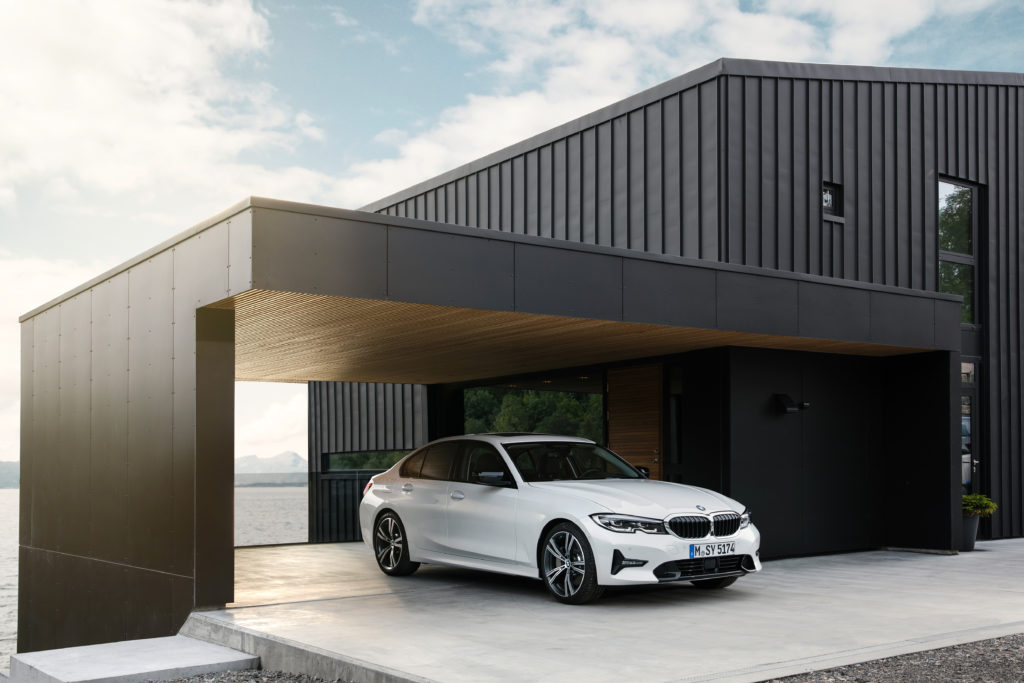
Getting past the initial shock of the new design language having been applied to a venerable nameplate like the 3 Series, one can clearly see that there is quite a bit going on. The active air flap control-enabled kidney grille follows the same widened styling first seen on the 8 Series, and the headlights feature a notch between the high and low beams, which also appear slightly stacked as the eye drifts to the fender. Full LED headlights are standard, but an optional adaptive LED setup will also be offered, with distinct U-shaped daytime running lights. The front bumper features another large centrally-located air intake in a position we’ve become accustomed to, and this area also uses the same active air flap control as above. A large radar sensor is situated directly in the middle, and the fog lamps on either side give way to NACA ducts (yes, really) for what BMW refers to as air curtains, which allow air to pass through the vehicle with minimal resistance.
Moving from the front end with its sculpted hood to the sides, there are plenty of defining elements at work here as well. Two lines which happen to stand out to us more than just about anything else are the lower one, which starts just aft of the front wheel with a sharp angle and continues until after it slopes upward as if to meet the rear fender, which it actually doesn’t reach. Looking a bit higher, the traditional belt line crease has also been adjusted up slightly to where it sits just above the door handles. Additionally, just where the traditionally shaped greenhouse ends, another line begins, which stretches back through the fuel door to the tail lights.
The rear is another polarizing area, and the traditionally flattering angle below allows for a nice examination. We can’t help but be reminded a bit of the current generation Lexus GS, which seems to share a similar look in terms of the upper portion of the trunk lid coming together with the tail lights. Speaking of rear illumination, the tail lights follow the familiar L-Shape BMW fans have come to know, but instead of adhering to a distinct all-red lens, turn signals and more are now differentiated with their own lenses which shine through clear outer plastic. The same NACA duct air curtain openings are also present, this time integrated with reflectors, and it should be noted that these vents and openings help achieve a slippery drag coefficient as low as 0.26. The Alpine White model captured here is not an M Sport line car, but still makes use of a constrasting diffusor between the dual exhaust tailpipes.
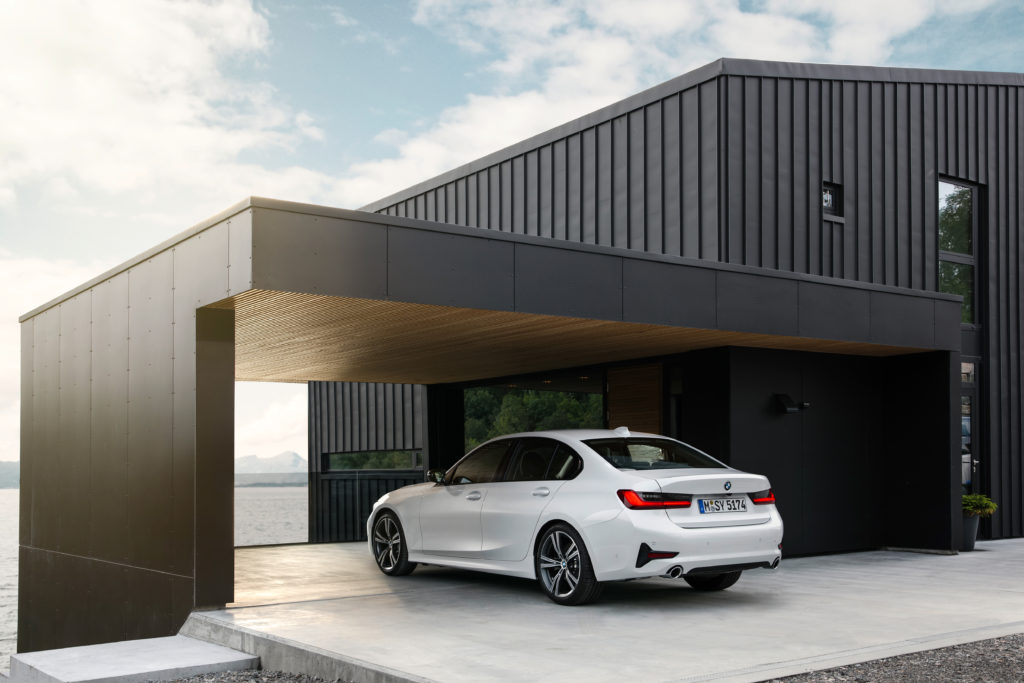
Fresh and new launch colors include Portimau Blue and Vermont Bronze Metallic, the latter of which could be our own David Rose‘s favorite new color. The substructure and underpinnings make use of the previously detailed rear-drive CLAR platform which can of course accept xDrive, and as we’ve come to expect with every new generation of BMW, rigidity is up 25% as a whole, with some areas as much as 50% stiffer than before.
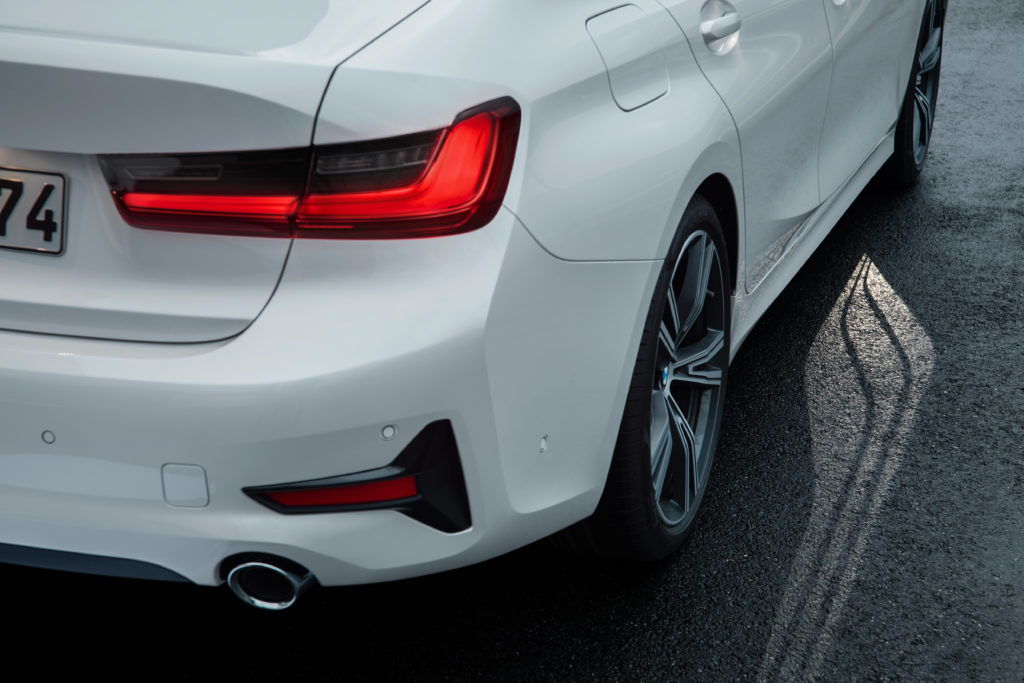
Wheel options are plentiful, and start at the now affordably eighteen-inch diameter with 225-section tires all around. Depending on whether a customer prefers the Sport, Luxury or M Sport line for their vehicle, the sizes and styles can increase up nineteen- and twenty-inch designs, and it looks like the more potent models will receive a staggered set of tires that include 225-section for the front and 255 for the rear. Although high-performing M Sport brakes will be available with their recognizable blue calipers, the standard items appear to be a multi-piston design with good aesthetics.
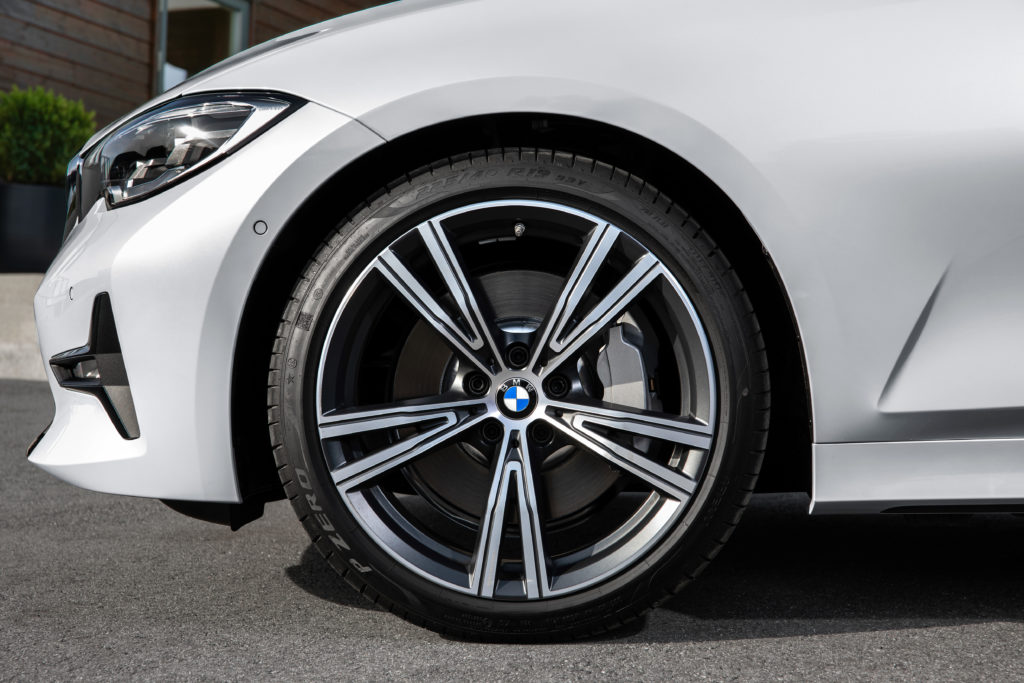
It’s always tough to judge material choice from near perfect press photos, but it’s safe to say that the interior space has been given a more luxury feel, with design elements that echo some of the styling exhibited in the new X5 and 8 Series. The three-spoke M Sport steering wheel is quite similar to the evolved design that can be specced in the aforementioned cars, and there are plenty of other familiarities like the centrally located dash vent, door panel layout, switchgear and controls. The center console appears to have grown somewhat, and is now covered in a large swath of trim which includes a retractable cover for the cupholders and front storage area. Full LED ambient lighting visible in footwells, instrument panel and door panels uses fiber optics in various places, and is configurable between six different colors and eleven combinations of brightness. Pulsating light signals can also be used to alert drivers and occupants in certain situations. In addition to a larger rear door aperture, the rear seating area has been expanded with additional legroom and increased comfort for passengers including the unlucky person strapped in the middle.
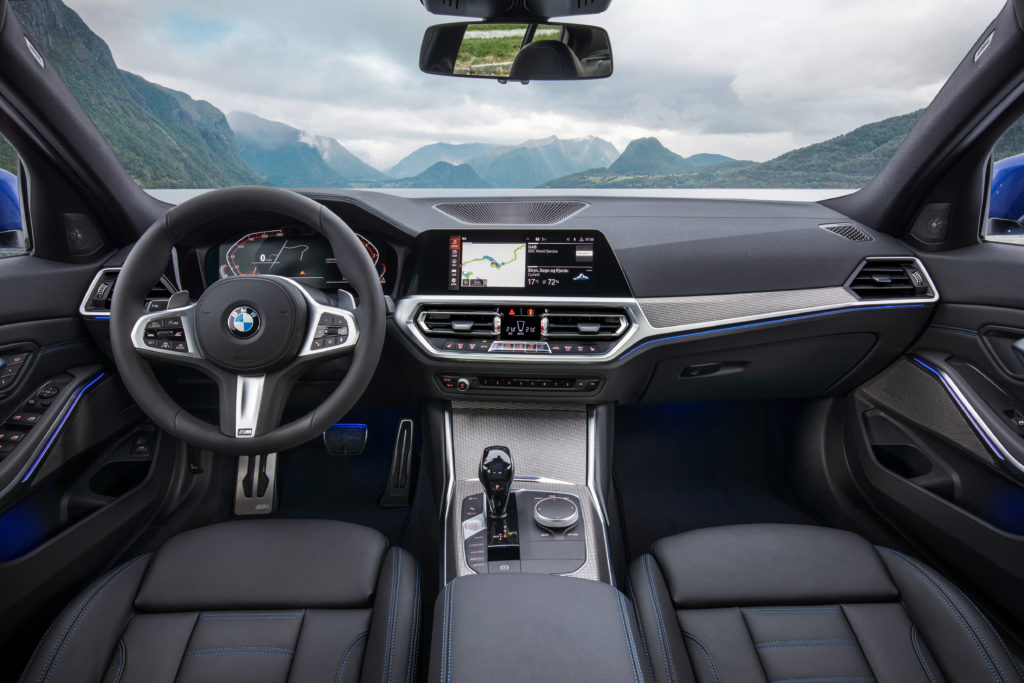
The cabin is also bristling with fresh technology that is filtering through the lineup in the Z4 and other fresh models, but brand new to the staple 3 Series. BMW Live Cockpit is standard, but has been split into two distinct versions. The entry-level offering includes iDrive 6.0 running on the 8.8-inch center touchscreen control display, while the gauge cluster features a 5.7-inch digital screen. Live Cockpit Professional will be optional, and upgrades the experience by way of a slightly larger 10.25-inch display running iDrive 7.0 linked together with a 12.3-inch high resolution display for the gauge cluster instruments and dials. The optional system also comes with added connectivity, a hard-drive for onboard media storage, connected navigation, WiFi interface, Apple CarPlay and a touch controller.
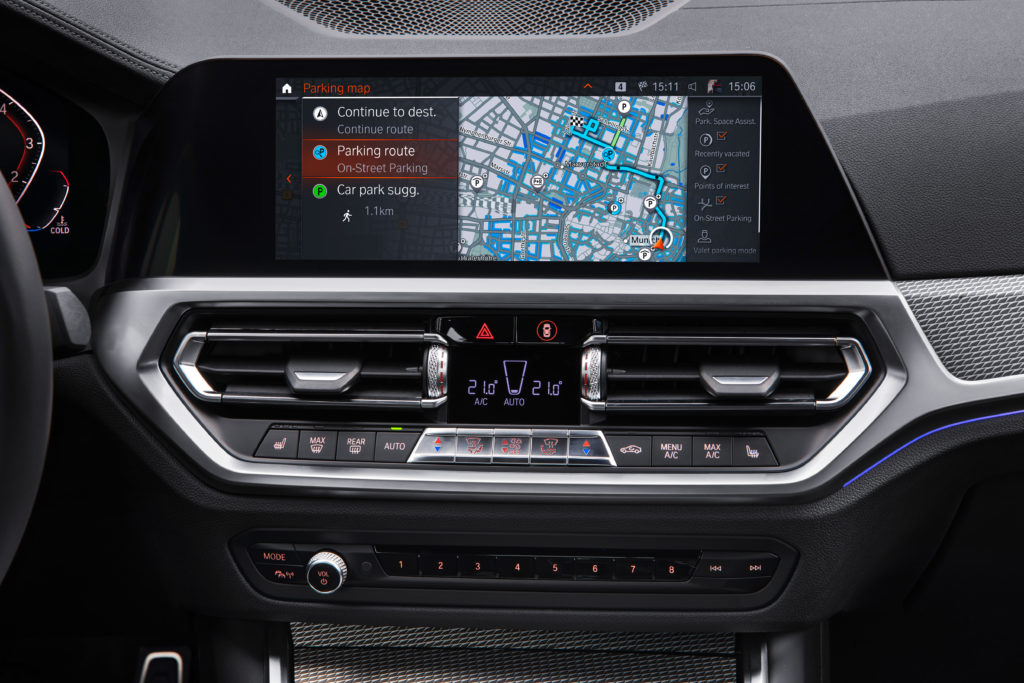
The shifter and control pad pictured below also share quite a bit in common with the setup on the other new members of the BMW lineup. The parking brake is now electronically actuated, and driver assistance systems are present in force. When it comes to sound, the standard Live Cockpit infotainment comes with a system that uses a total of ten speakers driven by a 205-watt amp. A Harman Kardon premium setup sounds like it will be a standalone option (as we hope it remains forever) offering a total of sixteen speakers integrated with a 464-watt seven-channel amp.
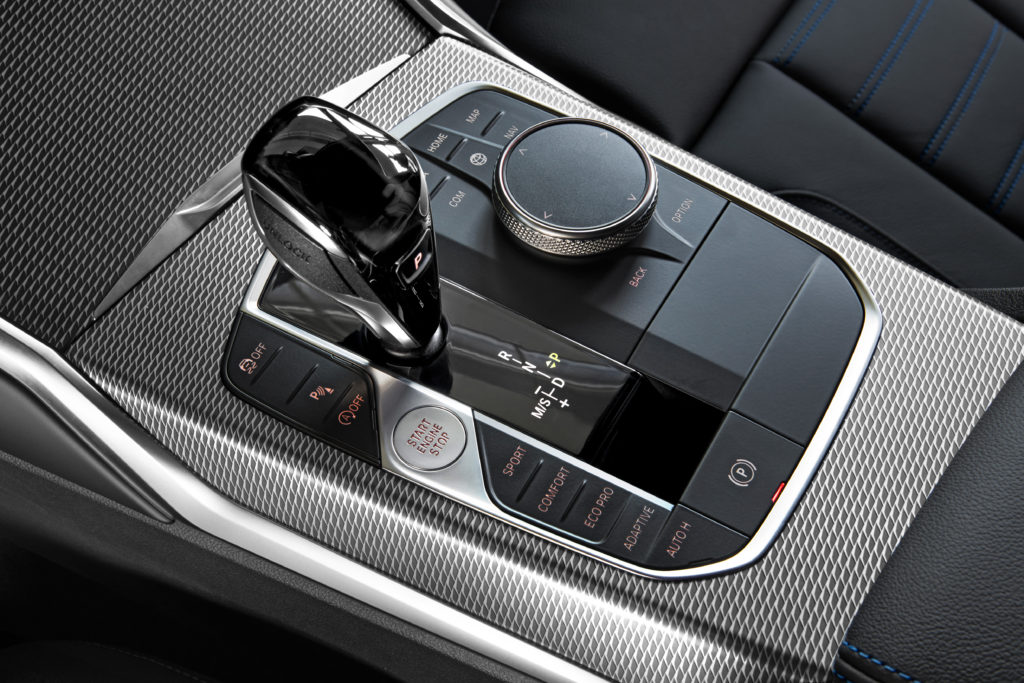
Although the B46 TwinPower Turbo four from the F30 has been carried over, the version fitted in the G20 330i is significantly more powerful than before. While the predecessor 330i offered 252 hp between 5,200 and 6,500 rpm with 258 lb. ft. of torque available from 1,450 to 4,800, the new version develops 255 hp from 5,000 up to 6,500 revs and a seriously impressive 295 lb. ft. of torque between 1,550 and 4,400. Detailed internal specifications haven’t been made public, but BMW mentions an increase in fuel pressure from 2,900 PSI to over 5,000, along with zero to 60 performance having benefitted as well.
The ZF eight-speed automatic transmission is another holdover, but once again, the specific type fitted to the new 3 Series benefits from a number of upgrades. Ratios are wider overall, the hydraulic valve body has been further refined and gearshift dynamics are improved. The unit also offers a launch control program to drop the clutch packs from a dig. It’s also been made more intelligent, as it now heavily interacts with iDrive navigation data and the front-mounted radar sensor to maximize efficiency and avoid unwanted gear changes. The array of sensors on the front end can also offer judgement when approaching vehicle from behind, and enact automatic downshifting to help bleed away speed. The same underlying tech is at work to make the engine start/stop function more efficient than before, by eliminating interruptions while the vehicle is briefly stopped at a roundabout, for example.
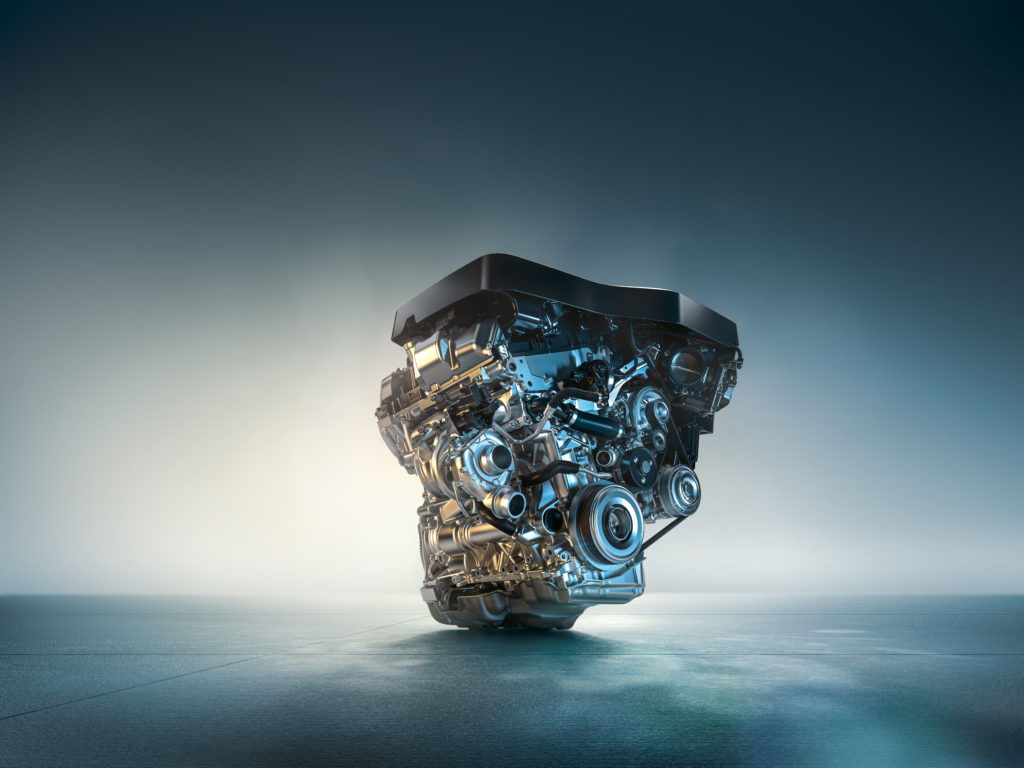
xDrive has been tweaked as well, and the electronically actuated clutch plates within the transfer case are now integrated with Dynamic Stability Control (DSC), allowing for full variability in different conditions from an icy turn to spirited driving. Efficiency has been increased, and the rear-biased system is lighter than before with an optimized oil supply. Variable sport steering, adaptive M suspension and M Sport brakes will be optionally available, and the G20 also marks the world premier for BMW’s new lift-related dampers.
A six cylinder model won’t come until spring of 2019, but we do know that it will be called the M340i xDrive Sedan. BMW is claiming 382 hp and 369 lb. ft. of torque, coming from a version of the B58 six cylinder that might be the same unit which will see use in the upcoming 2019 Z4 M40i. Along with a zero to 60 mph time of just 4.2 seconds, an M Sport rear differential is promised to, “impress any driver,” according to BMW, and there will be plenty of other supporting changes to the entry-level M Performance four-door.
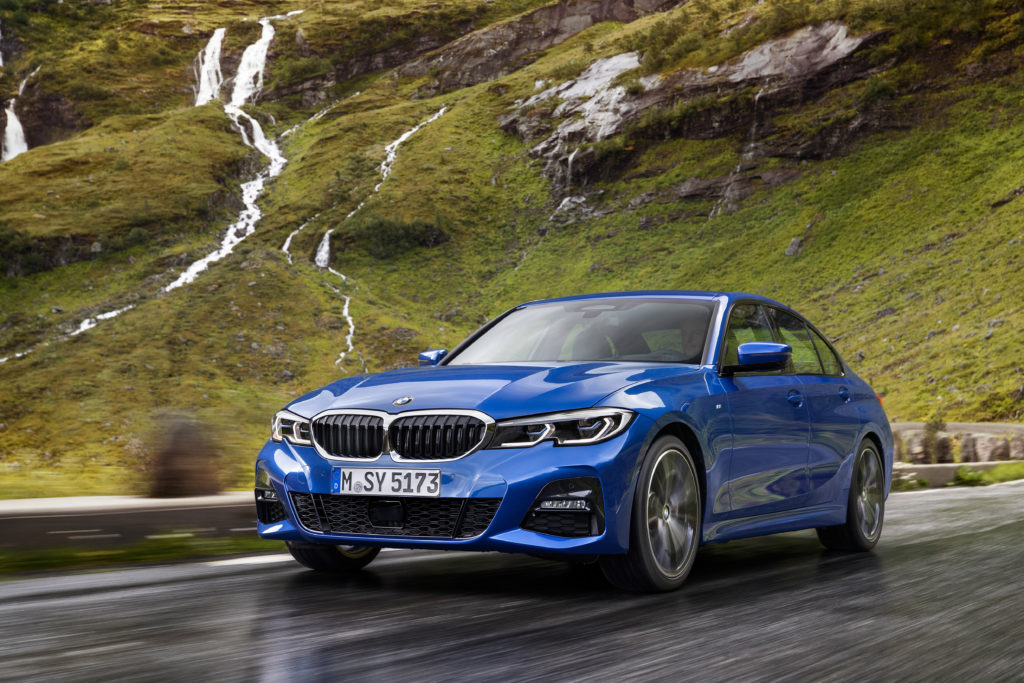
Polarizing visuals in mind, the new 3 Series looks ready to be a contender in the highly competitive sport sedan segment. Only time will tell if BMW’s efforts in terms of staying true to its core competency of producing fun, practical and sporting cars will have paid off, along with the usability and design of the mountain of technology, but the integration of it all appears cohesive, and the marque does have decades of experience in these areas.—Alex Tock
[Photos courtesy BMW AG.]

